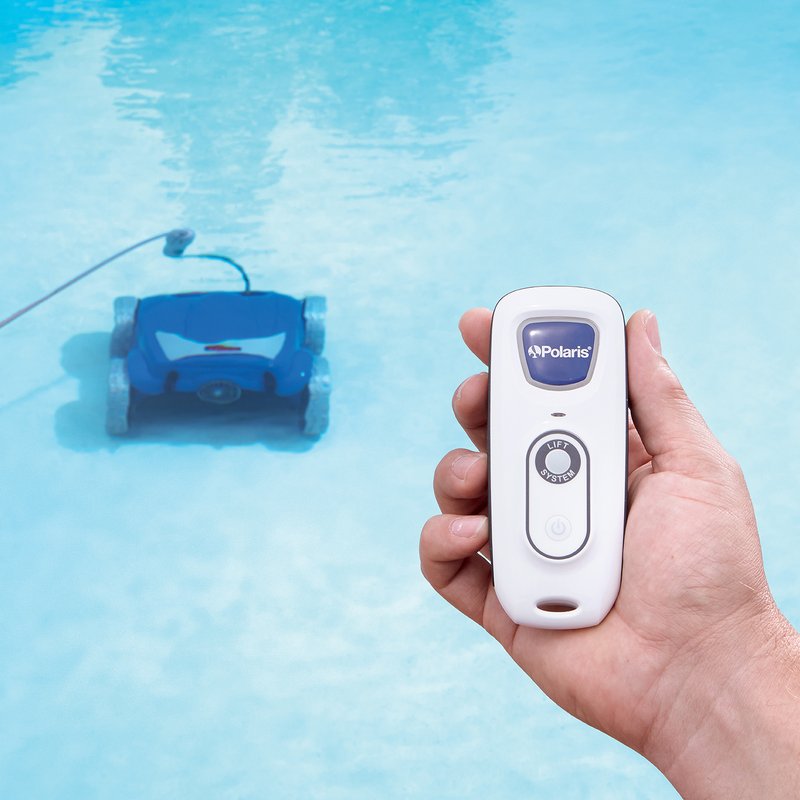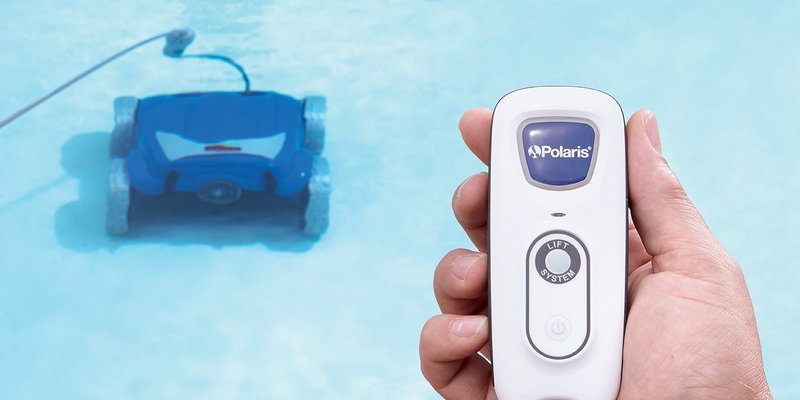
How Polaris Pool Remotes Work
First, let’s talk about what these remotes actually are. Polaris offers **wireless pool remotes** as part of their automation systems, like the *Polaris AquaLink* or *iAquaLink* series. Think of the remote as your pool’s universal translator. It sends signals to a central hub (the automation control center), which then tells the pool equipment—lights, pump, and heater—what to do.
Here’s the thing: The remote isn’t directly controlling each device. Instead, it talks to a “brain box” installed near your pool’s equipment pad. That brain box then sends power or signals to turn things on or off. It all works using radio signals, Bluetooth, Wi-Fi, or a special code depending on your system. Syncing (sometimes called pairing) the remote is a key step—if the remote and the control box don’t recognize each other, nothing happens.
You might be wondering about the range. Remote range varies by model, but most Polaris remotes work from anywhere in your backyard. If you’ve got thick walls or metal enclosures, range can drop, but usually, you get at least 200 to 300 feet in the open.
What Pool Features Can Polaris Remotes Control?
Not all remotes are created equal, and not all pool setups are the same. With a full Polaris automation system, your remote can control:
- Lights: This includes pool lights, spa lights, and sometimes landscape lighting if they’re tied in.
- Pump: The main circulation pump can be turned on or off, or set to a schedule. On newer systems, you can sometimes change the pump speed.
- Heater: You can switch the heater on/off and, with some remotes, even set the desired temperature for the pool or spa.
But here’s the catch—your system needs to be wired correctly. If, for example, your pump isn’t wired to the control center, the remote can’t see it. This is true for the heater and lights too. Polaris remotes don’t magically control gear they aren’t connected to. The automation box needs to “own” the relay or circuit for each piece.
If your remote isn’t doing what you want, it’s almost always a setup issue, not a remote problem.
Can the Polaris Remote Control Multiple Features at Once?
Short answer: Yes, if your system supports it. Long answer: Let me explain.
Polaris pool remotes usually come with multiple buttons or touchscreen zones. Each button can trigger a different circuit—one for lights, a second for the pump, a third for the heater, and maybe extras for waterfalls or spa jets. On fancier models, you can set up “scenes” or “macros” where one button press turns on several things at once. For example:
- Press “Party Mode”
- Pool lights turn on
- Pump shifts to high speed
- Heater starts warming the water
There’s a little programming involved on the controller side, but once you set it up, it’s pretty magical. If you have a basic remote with only a few buttons or toggles, you might need to do things one at a time. But most Polaris automation remotes now handle group actions easily.
What about newer “smart” remotes and apps? Polaris’ iAquaLink system lets you control everything from your smartphone. It’s even more flexible, and you can sync multiple features together with custom routines.
Syncing and Pairing Your Polaris Pool Remote
If you get a new remote, or if your current one is acting weird, you’ll need to pair or sync it with the main control box. This is where a lot of beginners hit snags.
Pairing a remote just means making sure it and the brain box are “talking the same language.” Usually, you’ll:
- Put the control box into pairing mode (often by holding a button or flipping a switch).
- Press a sync or pair button on the remote. Some models use a code you enter.
- Wait for a beep, light, or message that the connection is good.
If the remote won’t pair, check:
- The remote’s battery—dead batteries are classic troublemakers.
- That you’re within range; get closer if you’re having trouble.
- That you’re following the right sync instructions for your model (AquaLink, iAquaLink, etc.).
Troubleshooting tip: If all else fails, try resetting both the remote and the main box. Sometimes a factory reset clears out old pairing codes and lets you start fresh.
Common Troubleshooting Tips for Polaris Pool Remotes
When your Polaris remote isn’t working right, it’s frustrating. Before you assume something’s broken, walk through some quick fixes that solve most issues:
- Battery: Remotes suck power quietly. If yours isn’t responding, pop in fresh batteries. Even rechargeable models can lose their charge over time.
- Signal interference: Wi-Fi routers, thick walls, or metal boxes near the pool can mess with remote signals. Bring the remote closer and see if it works.
- Out of sync: Sometimes the remote just “forgets” the main box. Re-pair or sync it as described earlier.
- Programming: If buttons aren’t doing what you expect, it could be that the circuits weren’t programmed right when the system was installed. You may need to re-code the remote or adjust settings via your pool control app.
Don’t yank the batteries out in frustration—nine times out of ten, it’s a setup hiccup, not hardware failure.
If none of this works, check your pool controller’s user manual or call a pro. Polaris tech support is pretty helpful if you’re really stuck.
Comparing Polaris Remotes to Universal Pool Remotes
You might be wondering if you can grab a generic or universal remote instead of sticking with the Polaris brand. Here’s how they stack up:
- Polaris remotes are designed specifically for their control systems and usually offer the most features, especially when it comes to complex setups like syncing lights, pumps, and heaters.
- Universal remotes might handle basic on/off for a single circuit (like pool lights), but often can’t handle programming or group functions without special adapters or codes. Many can’t “talk” to automation boxes at all.
If your pool uses a full Polaris or Zodiac controller, stick with their remote or app for the smoothest experience. Universal remotes are best for simple, single-switch setups—not for mixing lights, pump, and heater control.
Battery Life, Codes, and Long-Term Care for Polaris Remotes
A lot of folks forget that remotes need a little love, too. Polaris pool remotes run on standard batteries or recharge via USB (depending on the model). Swapping batteries once a season is a smart move—even before things start acting up.
You might also want to jot down any pairing codes or custom settings you use. If the remote resets (say, if you change batteries or hit the wrong buttons), having your “cheat sheet” handy saves you time.
Keep the remote **dry**—most are splash-resistant, not waterproof. If it takes a swim, dry it out, pop the batteries, and let it sit in rice like you would a wet phone.
Why Control Everything Together Matters (Or Doesn’t)
Let’s zoom out: why do people care about having one remote for lights, heater, and pump? It’s about convenience and control. Being able to fire up the pool, set the mood, and get everything humming with one button makes owning a pool feel less like a chore and more like a treat.
But honestly, not everyone needs full-blown automation. If you’re happy flipping a switch or pressing a button on the pump timer, that’s fine too. The Polaris remote is perfect if you:
- Have complex pool/spa combos
- Love customizing scenes (like “Night Swim” or “Spa Party”)
- Want remote access from inside the house or via your phone
If your gear is older or not automation-ready, you might only get partial benefits. In those cases, upgrading to a full Polaris or compatible system is the best way to unlock all-in-one control.
Wrapping Up: Is a Polaris Pool Remote Right for You?
The bottom line: A Polaris pool remote **can** control your pool lights, heater, and pump together—if you have the right automation system, proper setup, and compatible gear. It’s not quite magic, but it’s close—one device (or app) to rule all the fun parts of your pool. The trickiest part is making sure every piece is synced, powered, and coded the right way.
If you’re setting up your dream pool or just tired of running outside on chilly nights to flip the heater, investing in a Polaris automation system with a solid remote can make a world of difference. And if you ever get stuck, remember: a fresh battery, a quick reset, and a little patience go a long way. Poolside living should be simple, not overwhelming—and with the right remote, that’s exactly what you’ll get.
